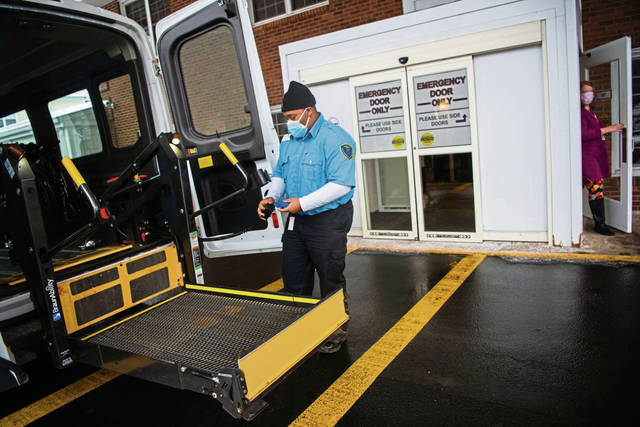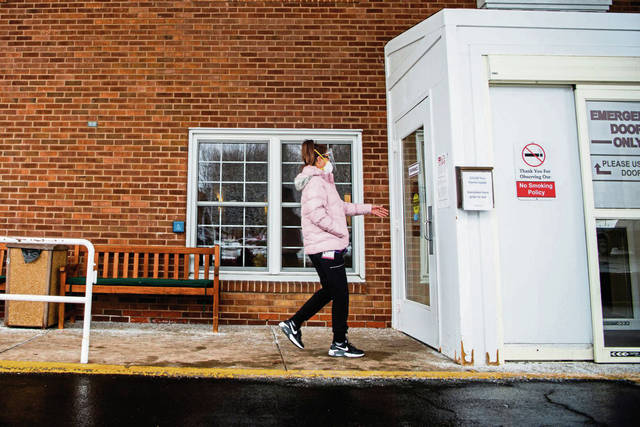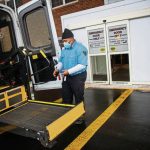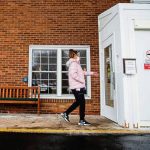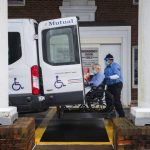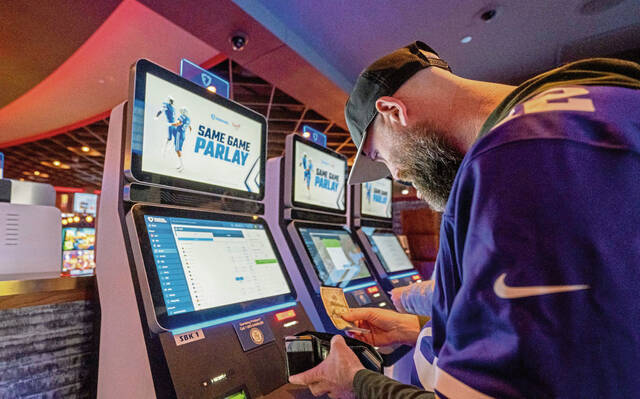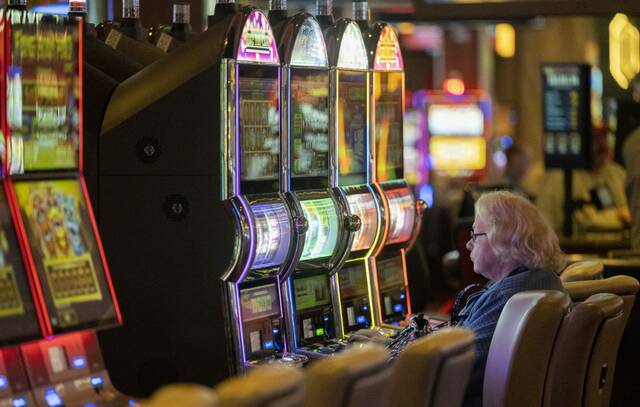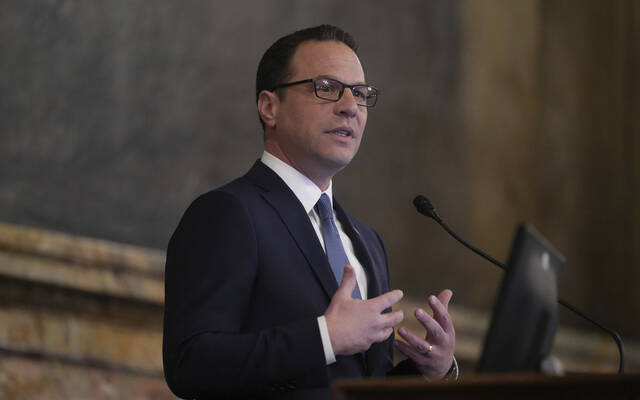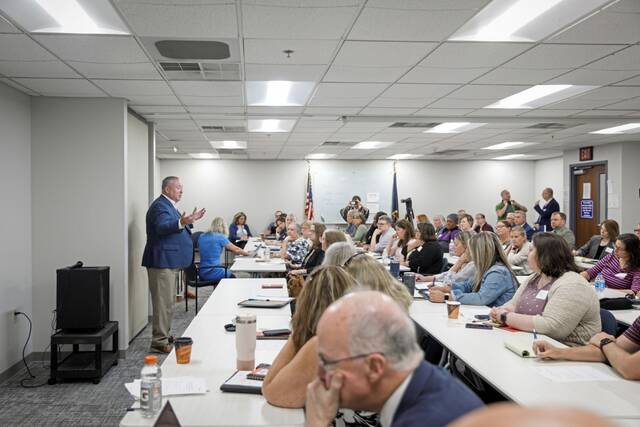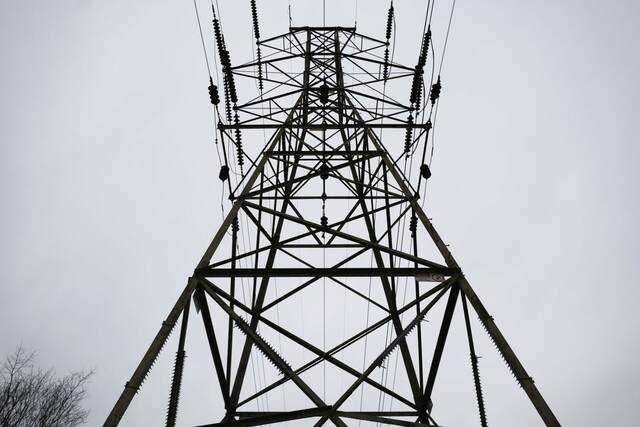For three or four hours a day, Shelly Kennedy sees nothing but spreadsheets.
She has two computer screens at her desk at Presbyterian SeniorCare Network. On one monitor is a spreadsheet tracking covid-19 cases, deaths, personal protective equipment — the list goes on — for each of the network’s facilities, including skilled nursing, personal care and assisted living. On the other, she logs into one government database after another, entering numbers, double- and triple-checking them for good measure.
Every day, she enters all of the data points into at least three state and federal databases, each one with a different format and requirements.
It is exhausting.
“With this pandemic — oh my gosh — it’s so much more,” Kennedy said with a sigh. “I spend hours a day just working on covid (data) right now.”
She’s just one of hundreds of nursing home employees across the state dedicating several hours a day to data entry, recording the data points that health officials and members of the public use to gauge the virus’ severity.
But despite all the effort, experts and advocates say the state’s covid-19 data for long-term care facilities are inconsistent at best. Since data started being posted by the Department of Health in May, nursing home operators, advocates and members of the public often have been confused by a litany of inaccuracies and missing information. Deadly outbreaks are going unnoticed, while providers insist they’re tracking everything by the book. Ten months into the pandemic that’s raged inside Pennsylvania’s nursing homes, it still isn’t clear where the data problems are originating.
Persistent data flaws
Case and death counts on the Department of Health’s website often mismatch what facilities report independently, or what is reported by the Centers for Medicare & Medicaid Services, a federal agency within the U.S. Department of Health and Human Services. Sometimes, the number of cases or deaths reported in a facility exceeds the number of residents altogether. Occasionally, the cumulative totals will fluctuate up and down from week to week, as if deceased residents are coming back to life. Often, the fields show “no data” at all.
“It’s not getting any better,” said Zach Shamberg, president and CEO of the Pennsylvania Healthcare Association. “We’ve lost faith, unfortunately, as an industry, in much of the data that’s been collected, reproduced and distributed on a state or federal website. We just don’t trust it at this point.”
While facilities are inundated with information, the state Department of Health also is struggling with an overload of covid-19 data, a health department spokesman said. The workload is compounded by an understaffed team of workers who all have other responsibilities. But at the end of the day, he said, the data is provided for the public’s benefit.
“It’s just a few people, and none of them are doing this full-time,” said spokesman Nate Wardle. “At this time, it’s part of the number of duties for a couple different employees.”
Once the data are reported by the facilities, Wardle said there is a review process in which team members look for inconsistencies, flagging obvious errors and marking them as having “no data.” Wardle said many of the errors can be explained by facilities mixing up the numbers, reporting information to the health department that should have gone to the federal database, for example.
“We try to catch as many of those as possible,” Wardle said. “But it’s not always reasonable to check them all.”
But accurate data gathering is important, advocates say — especially in a state where about 57% of covid-19 deaths have been recorded in long-term care facilities. On numerous occasions in the past 10 months, flaws in the state’s spreadsheets have hidden outbreaks from the public eye, inadvertent or not.
“It feels like we should know more by now. I’m sorry it’s a cumbersome system for reporting, and I know the state is obviously extremely busy. But we should have been able to figure this out by now, it seems,” said Diane Mineo, executive director for CARIE, an aging advocacy group based in Philadelphia.
Residents and families need to know what’s going on inside facilities, Mineo said, but it’s gotten to the point where the state’s data are hardly reliable.
On top of all of the factual errors, she said there’s persistent confusion about the way cases are counted: the state shares cumulative totals for the number of cases and deaths going back all the way to March, but doesn’t show how many of those cases are currently active.
“It’s really hard to know how many cases they actually have,” Mineo said. “People need to know the weekly data. Families need to know that. New admissions need to know that.”
Complicated reporting process
Recording health data has always been a responsibility for nursing home staff. But during the pandemic, providers say the volume of data collection is beyond what anyone was used to, and the process is more complicated than ever.
Shamberg said in the last several months, the online databases have often been down, or staff members couldn’t reach the health department to have questions answered. Entering information into three or more databases at a time has become tedious for providers, he said, who feel like they’re “spinning (their) wheels.” All in all, the process has become time-consuming and inconvenient.
The hours dedicated to tracking data, while imperative, comes at a time when long-term care facilities struggle to maintain adequate staff levels. A Tribune-Review investigation and data analysis found facilities statewide are relying increasingly on outside staffing agencies as covid outbreaks lead to an increased workload and employees getting sick.
Data reporting is just another task to tick off, providers say.
“I’m a registered nurse,” Kennedy said, at Presbyterian SeniorCare. “There’s a lot I could be doing. But I’m just on the websites.”
Nursing home operators have pleaded for one centralized system, one place to report the data for both state and federal entities. But that doesn’t seem likely.
“If there was one central location that asked us to report all of these items and then each government entity could pull the data, that would be fantastic,” said Elana Staschak, corporate director of nursing at Concordia Lutheran Ministries, another large regional chain. “I don’t understand why we can’t come to a more fluid solution.
“That data is reported on so many platforms, that we’re not even sure how that is taken and processed through to get the numbers that are reported publicly.”
John Dickson, executive director of Redstone Highlands, which has facilities in Greensburg, North Huntingdon and Murrysville, said his workers have become “covid weary,” and laborous data entry plays a role in that. He agreed a centralized system would eliminate a lot of the confusion, so data isn’t going through “different channels that could be skewed.” Redstone has shown “no data” in the state’s last two spreadsheets.
“It’s a pandemic, and we’re all working as best we can with the tools we have and the information we have,” Dickson said. “For the most part, the people in this industry are working as best they can.”
Wardle said the team is reviewing the process to possibly streamline and simplify the data-reporting procedure. He said there have been some discussions among the health department’s team to temporarily drop requirements for one platform, Corvina, which he said is not being used. The department is trying to develop resources for operators to answer questions throughout the reporting process.
“We are constantly reviewing this process to try to make it easier for the facilities,” Wardle said.
But the onerous procedure and the errors that persist nearly 10 months after the pandemic’s beginning create added burden for facilities that are already overworked.
“Here’s the saddest part: the more covid you have in your building, the more time it takes to report and the less time you have for your patients,” Staschek said. “It should be the exact opposite.”
‘We know it’s not going to get fixed’
Wardle said the facility-reported data has improved since the start of the pandemic and since the state began publishing the spreadsheets online — more nursing homes are reporting with regularity, and there seem to be fewer errors.
But when evaluating the number of infections in long-term care, at least 144 facilities still had “no data” in the state’s most recent spreadsheet on Dec. 29 — about 21% of all facilities in the state.
Two weeks earlier, that number was even larger: 425 facilities (60%) showed “no data” on the spreadsheet published Dec. 16. Advocates are baffled, and operators say they’re still often confused by the data requirements and feeling overworked by the process.
“I haven’t seen an improvement. I think it’s the same,” Staschek said, at Concordia. “It’s just another part of the routine, as we struggle with everything else.”
The errors are frustrating for everyone at this point, and no one seems to be taking responsibility. Two weeks after an outbreak began at Concordia’s Cabot campus in early December, the state’s Dec. 16 spreadsheet still showed “no data” for the facility’s case and death counts. It wasn’t until the Dec. 29 update that the spreadsheet was corrected to reflect how many cases had been added. A spokesman said the facility had reported every day as instructed.
Operators find themselves fielding phone calls from residents’ confused family members. Bobbie Gray, vice president at Presbyterian SeniorCare, said the state has misreported outbreaks at the chain’s facilities at least twice during the pandemic, mixing up the numbers for different facilities with similar-sounding names. Kennedy, who entered the data herself, said she triple-checked everything. She said everything was entered correctly on her end.
Mineo said CARIE has researched long-term care data in other states, and no place has mastered the task perfectly. At this point, she said the group is barely expecting improvements.
“We know it’s not going to get fixed,” she added. “But we need to learn and figure out systems for the future.”
How nursing homes report virus data
Here is a breakdown of some of the reporting requirements for facilities, according to operators who spoke with the Tribune-Review:
• Each skilled nursing facility is required to enter cumulative case and death counts, along with any needs for personal protective equipment, every day into a platform called Survey123, which goes to the state Department of Health.
• Cases and death counts, PCR and antigen tests for staff and residents, PPE levels and flu and respiratory illnesses within the past seven days must be reported daily though the National Healthcare Safety Network, which sends information to the Centers for Disease Control and Prevention. Vaccine distribution soon will be tracked through this platform, as well.
• A platform called Corvina records the number of positive and negative PCR and antigen tests administered for staff and residents, PPE levels and staff levels. It is reported daily to the state.
• Facilities using antigen tests (which is likely, given the need for rapid testing to contain outbreaks) must report results to PA-NEDSS, Pennsylvania’s version of the National Electronic Disease Surveillance System, within 24 hours. This information goes to the CDC.
• Each positive case requires an electronic report submission (ERS) to the Department of Health field office within 24 hours.
• Facilities also must report outbreak line listings to the Department of Health.


